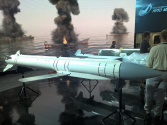Didn't there was an Ukrainian artillery and MLRS shelling during the whole Kherson withdrawal tho?He is skeptical Russia would abandon all positions without a fight.... yet no major combat and Russian retreat was largely absent of Ukrainian harassment across Dnieper river. It was almost like there was a negotiated retreat behind the scenes.
His predictions basically as good as a coin flip and his insights are quite obvious.
You are using an out of date browser. It may not display this or other websites correctly.
You should upgrade or use an alternative browser.
You should upgrade or use an alternative browser.
The War in the Ukraine
- Thread starter SampanViking
- Start date
The War on the Rocks podcast. Since about half a year ago, he has his own podcast “The Russia Contingency”Which podcast?
Because of your background you must know that you are quoting the typical Chinese idiom of "没有功劳,还有苦劳呢", for the non-Chinese speakers it means "even it is worthless, it is still some hard effort".What else do you expect in war? Everyone is going to be biased one way or another.
Unlike most analysts, Mike has been several times on the battlefield lines in Ukraine. Just 10 days go he visited Bakhmut to witness first hand the intensity and complexity of the urban combat taking place there at considerable risk to himself.
Maybe farther north from the city since the Ukrainians were very slow to actually advance because they thought he Russians were setting them up for a trap.Didn't there was a Ukrainian artillery and MLRS shelling during the whole Kherson withdrawal tho?
A nice breakdown of why Russia failed at Vuhledar
I had no idea US gave Ukraine mine arty shells.
I had no idea US gave Ukraine mine arty shells.
"A surveillance-drone operator called Aviator said the battle for the skies has come down to commercial equipment often sourced from China. He uses a DJI Mavic 3 drone to search for enemy positions and patch in live video for artillery commanders so they can refine strikes in real time.
The Russians, in turn, have a DJI device that can detect his drone’s flight path and launch location — information used to fire at Ukrainian positions, he said.
Russian troops also wield a Chinese-made device that can sever the link between his controls and the drone, Aviator said, forcing him to get close to enemy positions to maintain a strong signal. That puts him in range of mortars and snipers, where he can feel the organ-rumbling crash of howitzer strikes."
"The Bakhmut battle has taken a toll on the unit, he said. Of about two dozen assault operations in the area, only one ended without casualties. The darkest day, he said, involved an operation northeast of the city in the fall that left more than 150 soldiers dead, wounded or missing. “Even if you win, you still lose,” he said. “You go in knowing it will be hell.”'
"Compounding the difficulties, he said, was the condition of the artillery pieces, which are twice as old as Chichen, ground down from use and repaired at least 10 times already, making them less reliable with every volley.
Then there is the ammunition. Artillery is a delicate skill, with cannoneers assessing topography, air pressure and even the weather at the top of the round’s parabolic arc before taking a shot. Another variable, Chichen said, is the shell’s fuse and explosives, which vary according to where they are made. The unit has had shells from Pakistan, the Czech Republic and elsewhere, soldiers said.
And there are not enough shells. At the start of the invasion, Chichen said, he would fire about 300 rounds a day. Now, it’s closer to 10 a day, with far more targets than the ammunition needed to hit them."
"
Didn't there was an Ukrainian artillery and MLRS shelling during the whole Kherson withdrawal tho?
Ukraine hit city outskirts, but never launched a proper offensive against Kherson or ferries across Dnieper for fear of "Russian trap". Also self-evident via lack of mass casualty in ferry crossing Dnieper that they were mainly hitting city outskirts, not the river crossing.
Even after Russian announced the completion of full retreat from Kherson, the Ukrainians were very cautious fearing a "trap" set by Russians...
The Russians heavily mined the area. This bought them ample time to execute the withdrawal.Maybe farther north from the city since the Ukrainians were very slow to actually advance because they thought he Russians were setting them up for a trap.
Everything approaching was in open ground and in range of artillery from the east bank too...The Russians heavily mined the area. This bought them ample time to execute the withdrawal.

